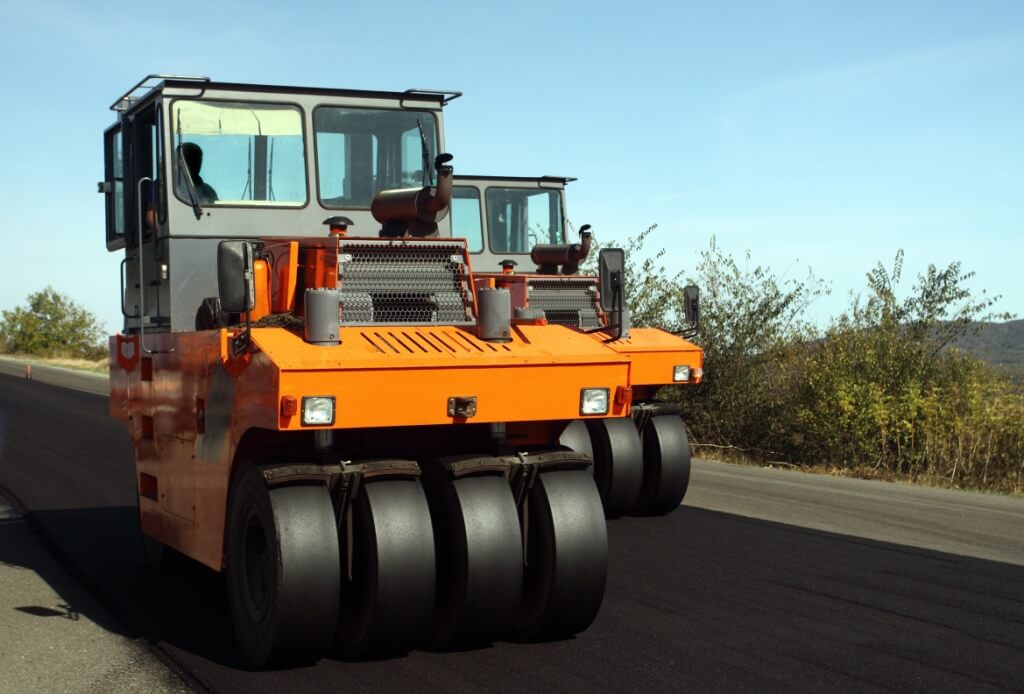Pneumatic rollers are widely used for compaction of sub grades, bases and bituminous mixes. These type of compaction equipment are suitable for soft base materials or layers of loose soil and closely grained sands. It can be used for compaction of the cohesive soils with the moisture content of 2-4% below the plastic limit. It is very effective for bituminous layers where the design mix has a high content of fines. These rollers are also called as rubber tyred rollers.

Pneumatic roller consists of the box mounted on two axles. Front axles have one wheel less than the rear axle. This type of roller consists of a heavily loaded wagon with several rows of four to six tyres. The pneumatic roller is rubber tyred instead of steel tyred or drums and feature two tandem axles, with three or four tyres on the front axles and four and five tyres on the rear. The tyres are mounted in pairs that can oscillate, so tyres can move down into soft spots that would be the barrier for a steel drum. Roller can be ballasted to adjust the weight. Depending on the size and type, the weight can vary from 10 to 35 tonnes. Each manufacturer recommends its limit for ballasting.
Different types of tyres are used in the pneumatic roller. Compaction technology depends on tyre geometry. There is a gap between the tyres provided in front and rear tyres. This gap is filled with the movement of the tyres to achieve uniform compaction effect and avoids tyre marks.
Three Types of Tyres are Used for the Compaction:
01. Flat Tyre:
Flat tyre is used at a fixed pressure of 0.4 mpa and cause less lateral movement of the particle than diagonal tyres. These type of flat tyre have a wide base. It is used for surface sealing on bituminous work.
02. Diagonal Tyres:
Industrial tyre manufacturers make diagonal and radial tyres as standard tyres. These are the most durable and can be used at the different pressure ranging between 0.3 to 0.9 Mpa.
03. Radial Tyres:
Radial tyres are preferred over diagonal tyres for pneumatic roller used on bituminous work. Front and rear wheels are connected to the different system, which prevents shoving of the mixed material during turning. The radial pattern enables lesser rolling resistance, lesser heat generation, tread stiffness ensuring uniform distribution of load during compaction.
Compaction by Pneumatic Tyred Rollers is Affected by:
- The weight of the roller.
- Area of contact between the tyre and the ground.
- Tyre Pressure
Characteristics of Pneumatic Tyred Roller :
01. Ground coverage is nearly about 80 %.
02. Contact pressure up to 700 kpa.
03. Gross weight of the roller is about 6 to 10 tonnes. The weight of the roller can be increased from 10 to 35 tonnes or more by ballasting with steel section or other material.
04. Compaction of soil/bituminous mix by pressure and kneading action.
05. Maximum density can be achieved by 8-10 passes.
06. The depth of compaction needed will define the weight of roller needed.
- Light weight Roller (200 kn) can compact up to = 150 mm thickness.
- Medium weight Roller (500 kn) can compact up to = 300 mm thickness.
- Heavy weight Roller (18000 kn) can compact up to = 450 mm thickness.
07. Pneumatic roller provides uniform pressure throughout the width.
08. The speed of the roller during the operation over soft ground is up to 8 km/h while on hard ground is up to 40 km/h.


